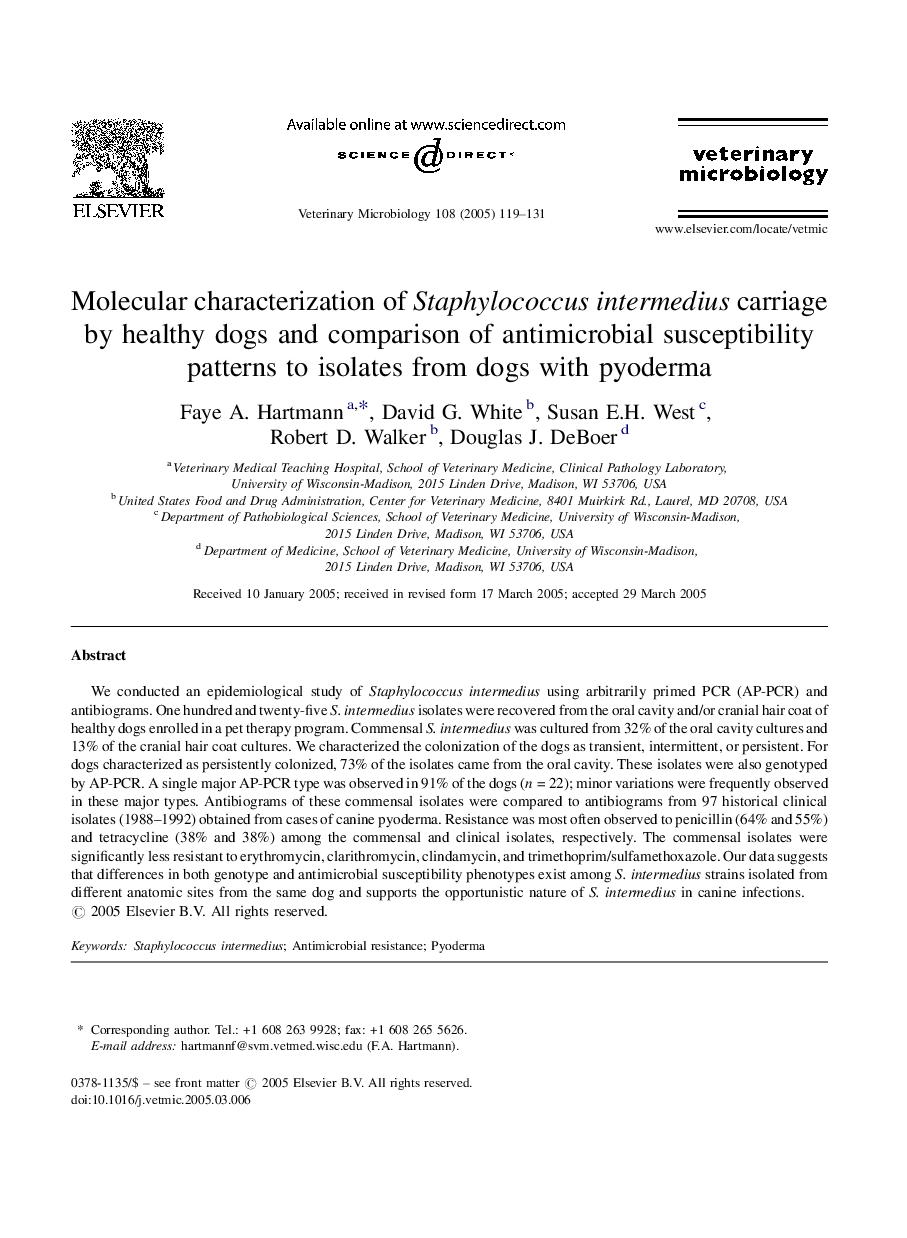| Article ID | Journal | Published Year | Pages | File Type |
|---|---|---|---|---|
| 8989618 | Veterinary Microbiology | 2005 | 13 Pages |
Abstract
We conducted an epidemiological study of Staphylococcus intermedius using arbitrarily primed PCR (AP-PCR) and antibiograms. One hundred and twenty-five S. intermedius isolates were recovered from the oral cavity and/or cranial hair coat of healthy dogs enrolled in a pet therapy program. Commensal S. intermedius was cultured from 32% of the oral cavity cultures and 13% of the cranial hair coat cultures. We characterized the colonization of the dogs as transient, intermittent, or persistent. For dogs characterized as persistently colonized, 73% of the isolates came from the oral cavity. These isolates were also genotyped by AP-PCR. A single major AP-PCR type was observed in 91% of the dogs (n = 22); minor variations were frequently observed in these major types. Antibiograms of these commensal isolates were compared to antibiograms from 97 historical clinical isolates (1988-1992) obtained from cases of canine pyoderma. Resistance was most often observed to penicillin (64% and 55%) and tetracycline (38% and 38%) among the commensal and clinical isolates, respectively. The commensal isolates were significantly less resistant to erythromycin, clarithromycin, clindamycin, and trimethoprim/sulfamethoxazole. Our data suggests that differences in both genotype and antimicrobial susceptibility phenotypes exist among S. intermedius strains isolated from different anatomic sites from the same dog and supports the opportunistic nature of S. intermedius in canine infections.
Related Topics
Life Sciences
Agricultural and Biological Sciences
Animal Science and Zoology
Authors
Faye A. Hartmann, David G. White, Susan E.H. West, Robert D. Walker, Douglas J. DeBoer,
